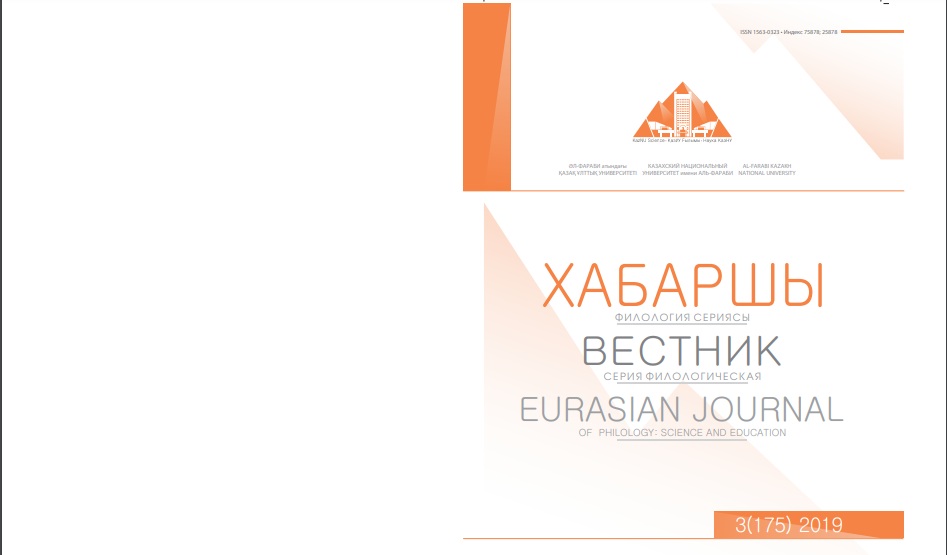Типология сбоев в системе художественной коммуникации «автор – текст – читатель»
DOI:
https://doi.org/10.26577/EJPh-2019-3-ph1Abstract
The problem investigated in the article relates to the actual field of literary criticism: the communicative aspects of poetics, which were studied only occasionally and haphazardly by scientists, have
now formed a new, actively developing section of the theory of literature. The novelty of the approach
is already in the very object of study: the typological characteristic of failures in the channel of verbal art
communication was undertaken for the first time. The analysis was carried out on a variety of material; in
each section, theoretical propositions arise from a direct analysis of classical and modern literary works
(or their fragments). The manifestation of the psychological mechanisms of the studied phenomena of
artistic speech is traced not only in the “defective” parts of the text, but it is shown that experienced authors use these mechanisms to build effective artistic techniques. The analytical part includes examples
from poems by V. Mayakovsky and A. Tsvetkov in the section on actual errors, from I. Turgenev’s novel
“Rudin” in the section on figurative contradictions, from V. Nabokov’s story in the section on spatiotemporal displacements, from Pushkin’s poem “A raven flies to a raven...” in the section on the reader’s
stereotype. Thus, the action of the feedback principle, fundamental for artistic communication, is demonstrated many times and at different levels: the influence of the laws of reader’s perception on the
formation of rules and techniques for building text. In the course of presenting the results of the study,
data are presented by the author of psychological experiments with readers






